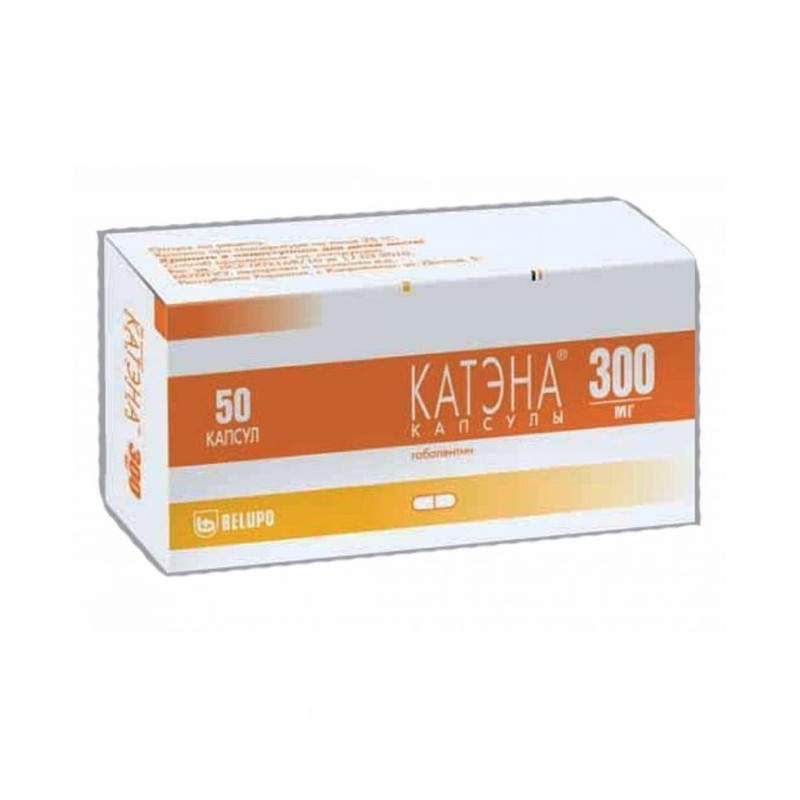



 All payments are encrypted via SSL
All payments are encrypted via SSL
 Full Refund if you haven't received your order
Full Refund if you haven't received your order
Antiepileptic drug. The chemical structure is similar to GABA, which serves as a brake mediator in the central nervous system. The mechanism of action of Gabapentin is believed to be different from other anticonvulsant drugs acting through GABA synapses (including valproate, barbiturates, benzodiazepines, GABA transaminase inhibitors, GABA trapping inhibitors, GABA agonists and GABA prodrugs). In vitro studies have shown that gabapentin is characterized by the presence of a new peptide binding site in rat brain tissues, including the hippocampus and cerebral cortex, which may be related to the anticonvulsant activity of gabapentin and its derivatives. At clinically relevant concentrations, gabapentin does not bind to other conventional drugs and neurotransmitter receptors in the brain, incl. with GABAA-, GABAB-, benzodiazepine receptors, with NMDA receptors.
Finally, the mechanism of action of gabapentin is not installed.
Gabapentin is absorbed from the gastrointestinal tract. After ingestion Cmax gabapentin in plasma is reached in 2-3 hours. Absolute bioavailability is about 60%. Taking it along with food (including those with a high fat content) does not affect gabapentin pharmacokinetics.
Gabapentin does not bind to plasma proteins and has Vd 57.7 liters In patients with epilepsy, the concentration of gabapentin in the cerebrospinal fluid is 20% of the corresponding Css in plasma at the end of the dosing interval.
Gabapentin is excreted only by the kidneys. No signs of gabapentin biotransformation were detected in humans. Gabapentin does not induce oxidases involved in drug metabolism. Removal of the drug is best described using a linear model. T1/2 does not depend on the dose and averages 5-7 hours
The clearance of gabapentin is reduced in the elderly and in patients with impaired renal function. The rate constant of elimination, plasma and renal clearance of gabapentin is directly proportional to creatinine clearance.
Gabapentin is removed from plasma by hemodialysis.
Plasma concentrations of gabapentin in children were similar to adults.
Treatment of neuropathic pain in adults over the age of 18; monotherapy of partial seizures with and without secondary generalization in adults and children over 12 years of age; as an additional tool in the treatment of partial seizures with secondary generalization and without it in adults and children aged 3 years and older.
Individual, depending on the indications and treatment regimen.
Nervous system: amnesia, ataxia, confusion, incoordination, depression, dizziness, dysarthria, increased nervous irritability,nystagmus, drowsiness, impaired thinking, tremor, convulsions, amblyopia, diplopia, hyperkinesia, strengthening, weakening or absence of reflexes, paresthesia, anxiety, hostility, gait disturbance.
Gastrointestinal: teeth staining, diarrhea, increased appetite, dry mouth, nausea, vomiting, flatulence, anorexia, gingivitis, abdominal pain, pancreatitis, changes in liver function tests.
Hemic and lymphatic: leukopenia, decrease in the number of leukocytes, thrombocytopenic purpura.
Respiratory: rhinitis, pharyngitis, cough, pneumonia.
Musculoskeletal system: myalgia, arthralgia, bone fractures.
Cardiovascular: arterial hypertension, manifestations of vasodilation.
Urogenital: urinary tract infections, urinary incontinence.
Allergic reactions: erythema multiforme, Stevens-Johnson syndrome.
Dermatologic: skin maceration, acne, itching, rash.
Other: back pain, fatigue, peripheral edema, impotence, asthenia, malaise, facial swelling, weight gain, accidental injury, asthenia, flu-like syndrome, fluctuations in blood glucose, in children - viral infection, otitis media.
Increased sensitivity to gabapentin.
Adequate and strictly controlled studies on the safety of gabapentin during pregnancy and lactation in humans have not been conducted.If necessary, use during pregnancy and lactation should carefully weigh the expected benefits of therapy for the mother and the potential risk to the fetus or infant.
Gabapentin is excreted in breast milk. When applied during lactation, the nature of the action of gabapentin on an infant has not been established.
Correction of the dosing regimen is required for patients with impaired renal function, as well as patients on hemodialysis.
The efficacy and safety of the treatment of neuropathic pain in patients under the age of 18 years have not been established.
Efficacy and safety of gabapentin monotherapy in the treatment of partial seizures in children under 12 years of age and additional therapy with gabapentin in the treatment of partial seizures in children under 3 years of age have not been established
Elderly patients may need to adjust the dosage regimen of gabapentin due to the fact that in this category of patients may decrease renal clearance.
Abrupt cessation of anticonvulsant therapy in patients with partial seizures may provoke a convulsive status. If necessary, reduce the dose, cancel gabapentin or replace it with an alternative means should be gradually over at least 1 week.
Gabapentin is not an effective treatment for abscess seizures.
When combined with other anticonvulsants, false-positive results were found in the urine protein test. To determine the protein in the urine, it is recommended to use a more specific method of precipitation of sulfosalicylic acid.
Correction of the dosing regimen is required for patients with impaired renal function, as well as patients on hemodialysis.
Elderly patients may need to adjust the dosage regimen of gabapentin due to the fact that in this category of patients may decrease renal clearance.
The efficacy and safety of the treatment of neuropathic pain in patients under the age of 18 years have not been established.
The efficacy and safety of gabapentin monotherapy in the treatment of partial seizures in children under 12 years of age and additional therapy with gabapentin in the treatment of partial seizures in children under 3 years of age have not been established.
During the period of treatment to prevent the use of alcohol.
Influence on ability to drive motor transport and control mechanisms
Before determining the individual response to treatment, the patient should refrain from potentially hazardous activities associated with the need for concentration and increased speed of psychomotor reactions.
With simultaneous use with antacids decreases the absorption of gabapentin from the gastrointestinal tract.
With simultaneous use with felbamate may increase T1/2felbamate.
With simultaneous use described case of increasing the concentration of phenytoin in the blood plasma.
